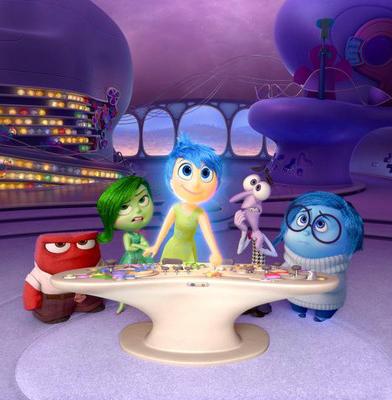The second-place finisher that weekend was “Inside Out,” the newest Pixar offering which, against “Jurassic World,” had become the highest grossing film – of any medium – based on an original concept, with its $90.8 million earnings eclipsing the $77 million earned by “Avatar” in 2009. Critics liked it and audiences seemed to like it, so as longtime Pixar fans, we gave it a shot.
No amount of box office receipts or critical praise, however, would have prepared me for how much “Inside Out” would impact me. Not only is it one of the summer’s biggest smash hits and another jewel in the Pixar crown, but it also may be the best film to already hit screens in 2015; a striking statement that original ideas and concepts do have a place among the franchises and cinematic comic-book universes that dominate today’s movie market.
Following its massive opening weekend, the film nipped at the heels of “Jurassic World” for another week before finally overtaking it over the Fourth of July weekend, at the same time beating out three other sequels: “Terminator: Genisys,” “Magic Mike XXL” and “Ted 2.” Currently, the film sits at the third spot atop the box office, behind first-place finisher “Minions” and “Jurassic World,” with a $17.1 million haul this past weekend. Amid all those sequels, “Inside Out” has enjoyed the best reviews, and has now become a full-blown pop culture phenomenon, BuzzFeed quizzes and all. It has also become, along with “Mad Max: Fury Road,” the poster child of the Internet’s campaign for the Oscars to recognize more mainstream films. But, while “Fury Road” and many franchise films can add their own distinct stamp on the world they inhibit, they many times end up repeating the same tropes that brought audiences to the first film without adding anything entirely new or unique. (I’m looking at you, “Ted 2.”)
“Inside Out,” on the other hand, succeeds in large part because of its uniqueness. Taking place inside the mind of an 11-year-old girl named Riley, whose family moves from Minnesota to San Francisco, the film revolves around the principal emotions at work in the girl’s head: the volatile Anger (Lewis Black), snotty Disgust (Mindy Kaling), nervous Fear (Bill Hader), and the dynamic duo of optimistic yet slightly bossy Joy (Amy Poehler) and demure, passive Sadness (Phyllis Smith). In this world, memories are marbles colored by the emotion at work in them, and are kept in the labyrinth of “Long-Term Memory.” When Sadness touches a core memory and Joy attempts to change it back, the two are accidentally thrown out of their Headquarters, leaving Anger, Disgust and Fear to run the show. What results is a beautiful, funny, heartbreaking and uplifting odyssey into the human mind that bursts with creativity and a realistic message about what it’s like to grow up, as Riley descends into an emotional tailspin.
While that might sound like a tired concept, the sheer ambition of “Inside Out” sets the film apart, and the fact that it lands perfectly makes it a creative triumph. It’s also Pixar’s most mature movie to date, with a realistic and emotional complexity that proves animation doesn’t have to be all fun and games, it can be just as deep and affecting as any other medium. “Inside Out” reminded me of what it was like – what it is like – trying to figure out what direction to go with one’s life, where to go to school, how to keep up with this crazy world that revolves around us. With my sister at the same point in life I was at not so long ago – the point of deciding where to go to school, what to do with life – I realized that she was all grown up. Suddenly the age difference didn’t seem so big anymore.
That’s one of the many reasons “Inside Out” hit me so hard: I saw pieces of myself in these characters, and while each person will see it a different way, chances are there’s a piece of them in there somewhere too. This delightful and original “concept that could” has taken the world by storm, and, amidst the franchise giants of the summer box office, has proven that originality is alive and well in Hollywood, and that if there is a concept, audiences are more than willing to listen.









